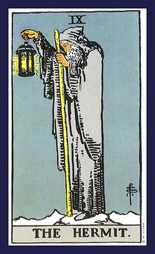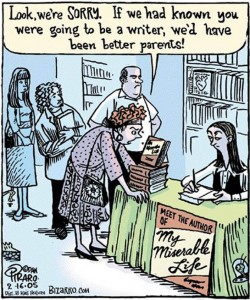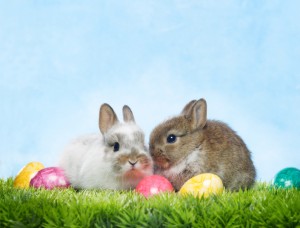Ysabel de la Rosa edits the online journal Getting Along with Grief, a home for poetry, memoir, other prose, and artwork about life after loss. In an email conversation between us during Holy Week, we got onto the topic of Christian interpretations of suffering. We were both struggling with the ways that our spiritual traditions can sometimes reinforce abuse rather than challenging it.
Having followed my “Survivors in Church” series on this blog, Ysabel mentioned that she’d been part of a congregation where the lesbian pastor severely betrayed people’s trust. The surrounding community then exploited the scandal to argue against LGBT acceptance–shaming victims of spiritual abuse, in order to advance “Biblical truth”. Meanwhile, I felt my faith hanging by a thread after hearing a sermon to the effect that “Jesus ended the cycle of violence by absorbing violence”, a sentiment often repeated by progressive Christian writers during the Lenten season. Anyone with a basic education in domestic violence knows that absorbing abuse fuels the cycle of violence; believing otherwise (often with the church’s encouragement) keeps victims trapped in trying to be good enough and forgiving enough to magically change the perpetrator. And isn’t that one of the popular theories of Christ’s Atonement–that his perfect victimhood moves our hearts to repentance?
I’m through with taking victimhood as a role model. And I also refuse to identify with perpetrators who need someone else’s blood to make their own wounds visible. If that’s being a Christian… SmashMouth said it best: When you’re done…you’re really done.
I asked Ysabel: “A lot of traditional Christian doctrine seems to reinforce psychological distortions that prevent trauma healing–all that self-negation and glorification of suffering. I keep searching for more positive ways to understand Jesus. Do you have any favorite books or websites along these lines?”
She’s given me permission to quote an edited version of our conversation below.
Ysabel:
“These will not address childhood trauma directly, but Brian McLaren’s A New Kind of Christianity may be just right for you at this point. It was a turning point book for me for many reasons. I highly recommend John Dominic Crossan’s books that cover Roman and Christian history. He does an excellent job of putting Jesus’s life and message in context, and that context was one of occupation. If you are going to fight having your people occupied by another, that entails some necessary suffering…and there, to me, is a key. Some suffering is necessary, and one of the things I find comforting about Christianity is that it acknowledges that all suffer, but I believe the glorification of that suffering came about as a tool of a human and power-seeking institution, that was served well by making people feel sanctified about their suffering and encouraging them to stay in a suffering state or place. Other suffering is not necessary…and that’s one point where we tend to get hung up and start to look on our suffering as an accomplishment or as something that entitles us to privileges…
“I see the church as the tomb—and only the tomb–where the resurrection takes place. We have to have a tomb. 🙂 Don’t let the dark walls of the tomb (doctrine) rob you of the resurrection of the spirit.
“As for childhood trauma, I have spent a lot of time thinking about this. I was not abused, but my life has been deeply affected–and painfully so–by people who were.
“At some point, there needs to occur a deep letting go into the light. I don’t completely understand it, but I have seen that when adults cannot do that, they stay stuck, stuck, stuck in the trauma. And, whether conscious or not, they traumatize others. One thing I have thought about is Mary at the foot of the cross. Does her suffering not equal any other?
“Christianity does not promise me ease or lack of suffering. However, it clearly tells me that a life with suffering is NOT a sign of failure nor is an easy life a sign of success. I find acknowledgment of my suffering in the crucifixion and a strange kind of healing in the resurrection story. It does not matter to me one whit if Jesus was physically resurrected from the dead. My own father, a Methodist minister with a Ph.D. in theology, believed that the primary aim of the resurrection was to reveal eternal life to others, to make a statement that suffering is not the final answer. Did Jesus appear physically, spiritually? It doesn’t matter. That message about eternal life and suffering not being the final answer remains true.
The resurrection also tells me that to ‘recover’ is not to ‘return’. There is often some loss in healing. I had heart surgery in 2013. I have ‘recovered’, but I won’t ‘return’ to where I was several years ago. I said I did not suffer abuse in childhood, but I certainly have in my adulthood. I have recovered, largely, from that, but I will never return to the state of innocence or even joy that I lived in before the abuse. So, that return/recover distinction has helped me see that healing does not mean erasing, it does not mean we get to recover something we never had, but we do get to recover what and who we are now, and that is no small thing. ‘Shake the dust off your sandals and move on.'”
I wrote back: About “recover versus return”, I like to meditate on the idea that the risen Christ still had wounds. (I always picture that Isenheim Altarpiece image where his body is glowing with light and the wounds look like rubies.) The Cross and Resurrection are such paradoxical symbols, because it is a fine line between de-stigmatizing inevitable suffering versus glorifying self-destruction. My heart continues to be drawn to the mystery despite the headaches it gives me. I remember a video of Crossan saying that Jesus didn’t die FOR our sins but BECAUSE of our sins. It’s not the suffering that’s redemptive, but the love, which only entails suffering as a by-product of his encounter with a flawed world.
Ysabel:
“You are right. SUFFERING IS NOT REDEMPTIVE!! It is necessary, though. It comes with the life package. What it can do is teach…but it is another power which is wholly redemptive. The good news is that suffering can lead us to that power. The whole business of Christ dying for our sins is a notion come quite late to Christianity.”
So I guess I’m not done with Jesus. I am, though, for the time being, exhausted with Christianity.
I believe I can connect with a Jesus who speaks truth and healing into my particular experience. But participating in this collective thing called Christianity, I’m struggling uphill against a headwind of codependent myths, triggering images, and the simple ignorance of good people who don’t prioritize abuse prevention or trauma recovery in their theology. On the flip side, I understand that congregations include people in all stages of psychological growth. I wouldn’t have wanted to hear about these issues 10 years ago! Should I graciously get off the bus instead of trying to turn it around?

The cold never bothered me anyway.




